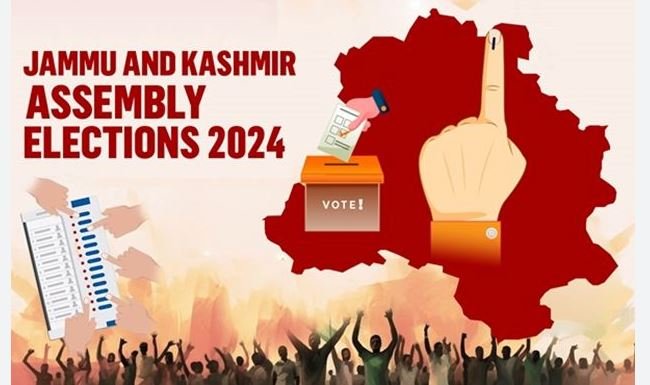The first phase of the Jammu and Kashmir assembly elections has marked a historic milestone with a voter turnout exceeding 61 percent, signaling a significant shift in the region’s democratic engagement following the abrogation of Article 370. This initial phase covered 24 constituencies across seven districts, including notable turnout records in Kishtwar, Doda, and Ramban, highlighting a renewed commitment to the electoral process amidst recent political changes.
The abrogation of Article 370 in August 2019, which restructured Jammu and Kashmir into two Union Territories, fundamentally altered the political landscape of the region. This phase of assembly elections, therefore, represents a critical juncture in the region’s democratic journey. The first phase’s voter turnout is not just a statistic but a reflection of the electorate’s response to the evolving political environment. Kishtwar district emerged as a standout with an exceptional voter turnout of 80.14 percent, underscoring the public’s strong engagement in the democratic process. This high turnout in Kishtwar is particularly notable as it signifies a marked shift in voter enthusiasm, reflecting the electorate’s eagerness to participate in shaping their future under the new political framework. The high voter participation in Kishtwar, alongside significant turnouts in Doda and Ramban, demonstrates a broader trend of increasing political engagement across the region. The overall turnout of over 61 percent in the first phase is a positive indicator of the public’s renewed interest in the electoral process. Districts such as Doda, with a turnout of 71.34 percent, and Ramban, at 70.55 percent, further exemplify this trend. The peaceful nature of the polling process, despite some minor incidents, highlights the effectiveness of security measures and electoral management. Chief Electoral Officer P K Pole confirmed that the elections were conducted smoothly, with the reported turnout being the highest in the past seven elections, including both Lok Sabha and assembly polls. The high voter turnout can be attributed to several factors. Enhanced security arrangements have alleviated previous concerns, encouraging greater voter participation. The active involvement of political parties and candidates has also played a role in mobilizing voters and raising awareness about the elections. Furthermore, the Election Commission’s efforts to ensure transparency and fairness in the electoral process have helped build public trust and confidence. The successful conduct of this phase is a significant achievement in the context of the new administrative framework established after the abrogation of Article 370. It reflects the adaptability and resilience of the democratic institutions in Jammu and Kashmir. The high level of voter engagement indicates a positive reception of the new political setup and a commitment to participating in the democratic process despite substantial changes. This positive trend is expected to continue in the upcoming phases of the elections, with the hope that voter enthusiasm will remain high and contribute to a robust and representative electoral outcome. The implications of this high voter turnout extend beyond the immediate electoral context. It reflects a broader desire for political stability, development, and progress in Jammu and Kashmir. The electorate’s active participation underscores the importance of strengthening democratic institutions and ensuring that the voices of all citizens are heard and represented. As the election process moves into its subsequent phases, the positive outcomes from the first phase set a promising precedent. The successful management of polling and high voter turnout provides a foundation for continued engagement and participation. The hope is that the remaining phases will see similar enthusiasm and peaceful polling levels, contributing to a comprehensive and representative electoral process.
Finally, the first phase of the Jammu and Kashmir assembly elections has set a significant precedent with a historic voter turnout of over 61 percent. This achievement marks a new chapter in the region’s democratic journey, reflecting the public’s renewed interest in the electoral process and the effective management of the elections. As the electoral process continues, the expectation is for sustained high voter engagement and a robust democratic outcome that will contribute to the region’s development and stability.




